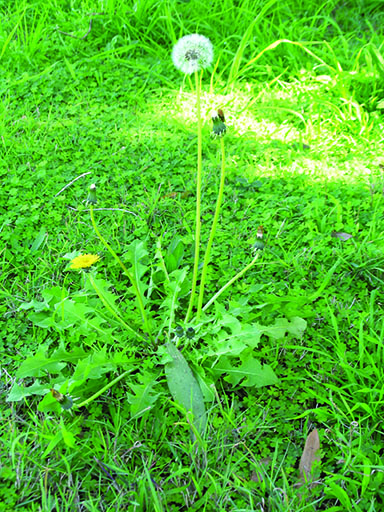6 Unconventional food
You will now turn your attention to your diet in relation to environmental sustainability. Incorporating local wild plants in diet not only helps to diversify the dinner plate, but also promotes environmental sustainability by reducing the reliance on commercially grown vegetables and connecting people to nature.
Edible wild plants are common in farmland or in urban parks or even in backyards. These plants often grow on field margins, in hedgerows, or in small woodlands on farmland. They can supplement food and nutrition needs and also provide seasonal alternatives in ‘lean’ months before the annual harvest, particularly in low-income countries where farming is dependent on rainfall and influenced by the seasons. In many low-income countries where people are still dependent on edible wild plants for their food, it is important that farmland also supports this type of biodiversity.
A study by Shumsky et al. (2014), carried out in two villages in semi-arid parts of rural eastern Kenya, showed that edible wild plants form an important source of food and nutrition to households that have lower asset levels, lack off-farm income, and report food insecurity. Edible wild plants, however, are also common in the UK countryside.
In the following activity, you will use the field guide for edible wild plants in the UK to prepare a list of plants that you can find locally and think about how these plants might help you to diversify your dinner plate.
Activity 7 Edible wild plants in the UK
Below is a link to the guide to edible wild plants in the UK. Which of these plants can be found near where you live? If you are a non-UK resident, you may want to use a guide to edible wild plants local to you, although you may come across some of your local plants from the UK guide.
Wild Food UK: Identifying edible and poisonous wild plants [Tip: hold Ctrl and click a link to open it in a new tab. (Hide tip)]
It is likely that you will also need to do some research about what species grow close to where you live, or spend a few minutes observing the area immediately around you. Within the UK, records of where different species have been observed can be found via the website of the Online Atlas of the British and Irish Flora, and in the interactive plant distribution map provided on the website of the Botanical Society of Britain & Ireland. The National Biodiversity Network Atlas may also be useful, likewise searches relating to local foraging activities.
Answer
You may have found that there are a large number of edible wild plants within a short distance of where you live. It is likely that you were already aware of the presence of some of these – for example, Taraxacum officinale, the common dandelion (Figure 8), which can be found in urban gardens or in the countryside. Other species might be new to you, both in terms of the fact that they can be eaten or that they are growing in your local area.
Many of these plants can be used to add a bit of variety to your everyday dinner plate. For example, dandelion leaves can be quite bitter, but if you cover the dandelion plant with an upturned flowerpot, the leaves will turn a pale yellow–white colour as they become less potent, and will then make a nice salad. With a growing public interest in foraging for food in recent years, various websites and books have emerged that offer recipes involving wild plants and fruits.

It is important to note, though, that much care must be taken when selecting wild plants to eat. Non-edible species may look quite similar to others that can be eaten, and it is possible for edible species to become contaminated by pollution or pesticides in their immediate environment. Ultimately, as stated in the guide provided above, you should ‘never consume a wild plant unless you are absolutely certain of its identification and its safety for consumption’ (Harrison, 2008, p. 5).
Likewise, some plant species may be in scarce supply, or are protected by law. It is an offense to deliberately pick, collect or destroy protected species. It also illegal to trespass on privately owned land, which may be where some edible species are found.
Next you will examine what ‘frontier food’ is and ask whether future food sustainability might need to be open to these radical alternatives.
